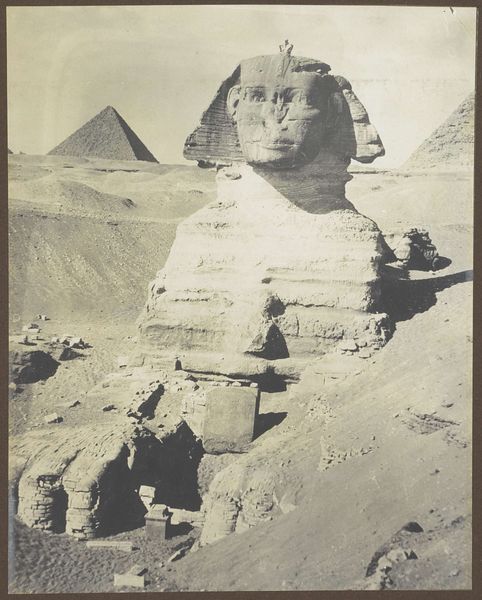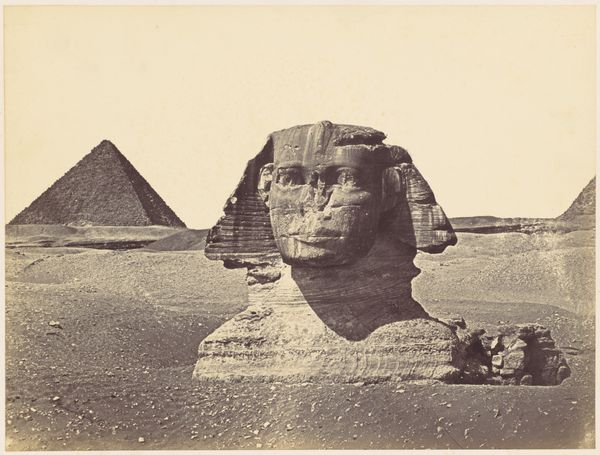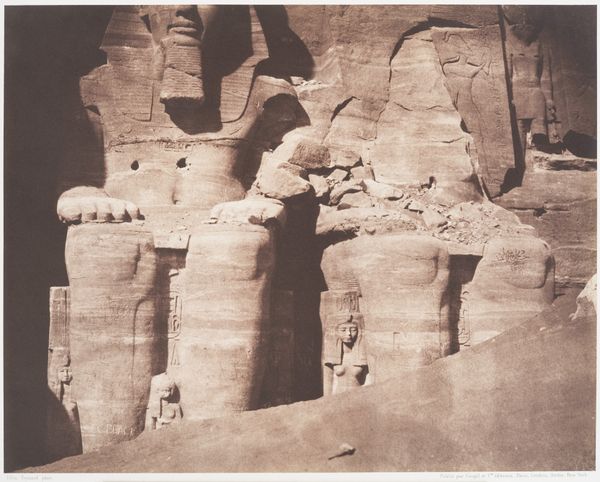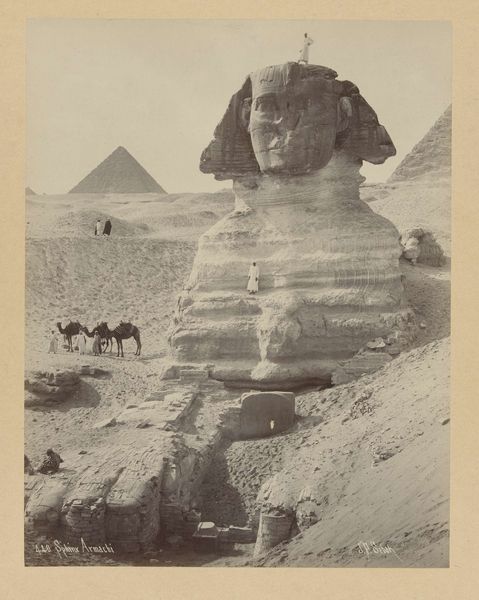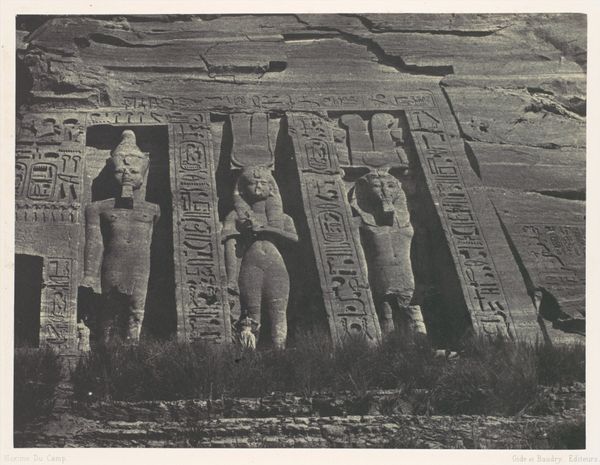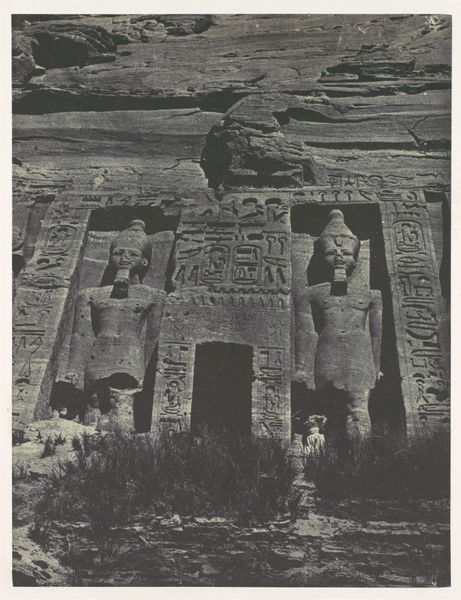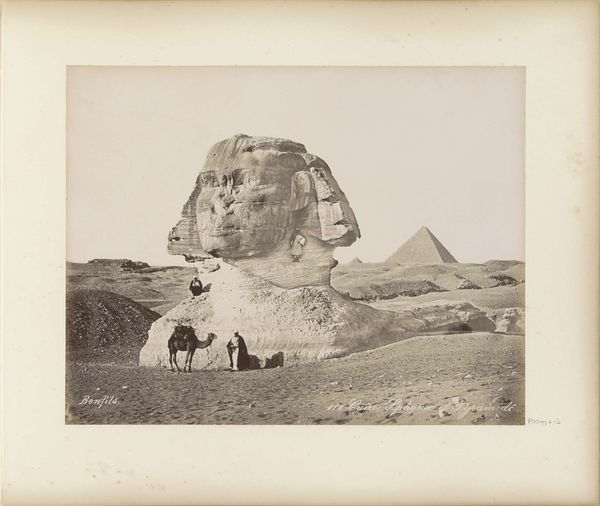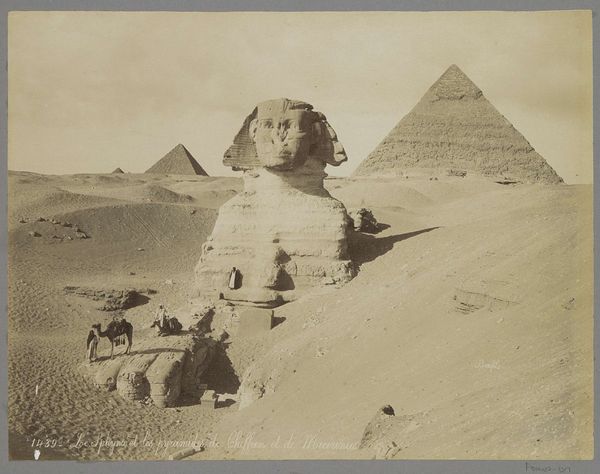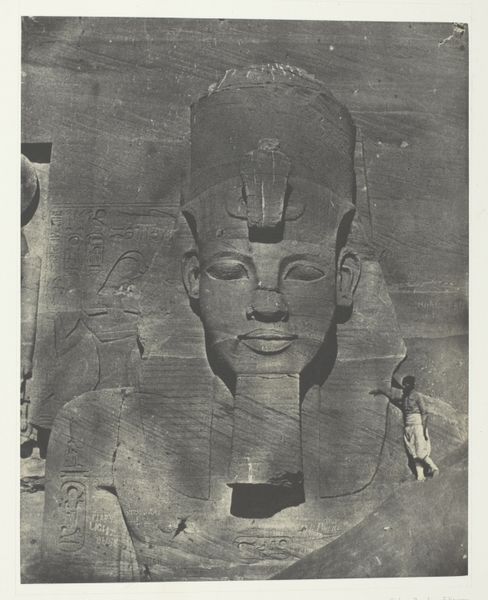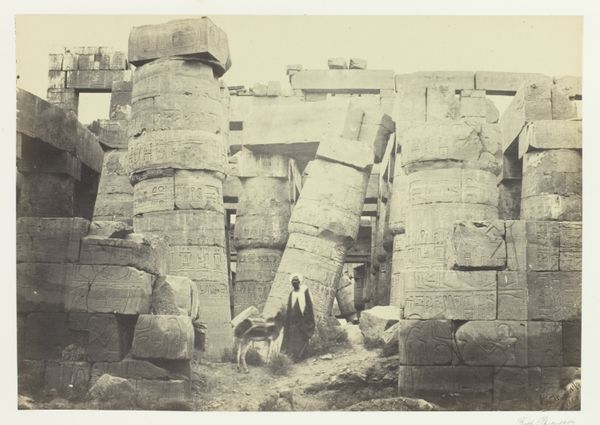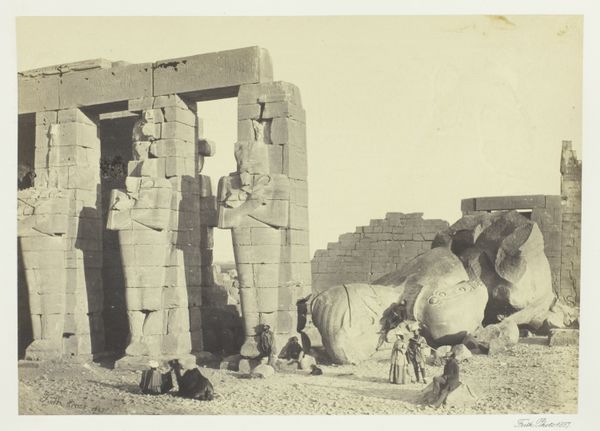
Abou Sembil, Grand Spéos - Statues Colossales, Vues de Trois-Quarts 1851 - 1852
0:00
0:00
print, daguerreotype, photography, sculpture
# print
#
landscape
#
daguerreotype
#
ancient-egyptian-art
#
photography
#
ancient-mediterranean
#
sculpture
Dimensions: Image: 30 x 24.4 cm (11 13/16 x 9 5/8 in.) Mount: 51.6 x 39.9 cm (20 5/16 x 15 11/16 in.)
Copyright: Public Domain
Félix Teynard captured this photograph of the colossal statues at Abu Simbel. The pharaoh, likely Ramses II, sits regally, embodying power and divine authority. The nemes headdress and uraeus cobra on his brow are potent symbols of kingship, declaring his status as both ruler and deity. Consider how such motifs of divine rulers recur throughout history, from the god-kings of Mesopotamia to the emperors of Rome. Even in the modern era, we see echoes of this impulse in the carefully constructed images of political leaders. The pharaoh's serene expression, despite the ravages of time, speaks to an enduring desire for immortality and remembrance. This yearning transcends cultures, manifesting in countless funerary monuments and portraits intended to immortalize the deceased. The image taps into our collective unconscious, reminding us of our own mortality and the universal human quest for meaning and legacy. It’s a symbol that resurfaces, evolves, and takes on new meanings across time.
Comments
No comments
Be the first to comment and join the conversation on the ultimate creative platform.
